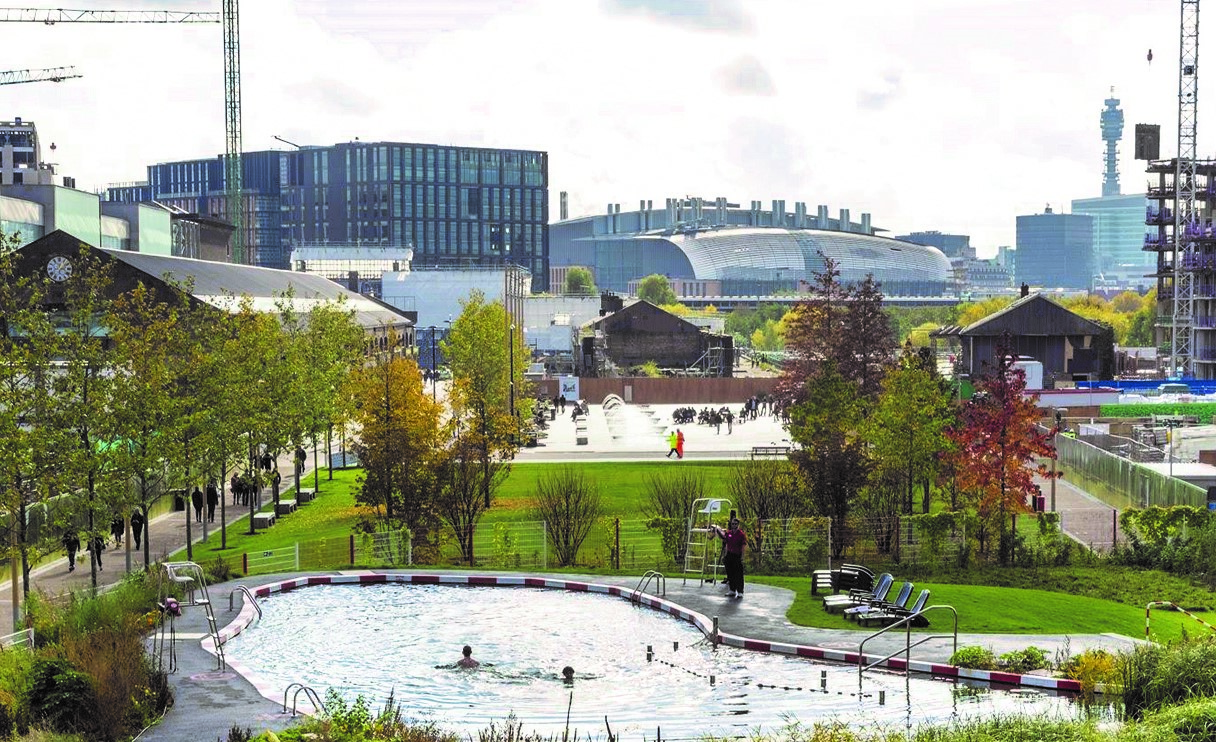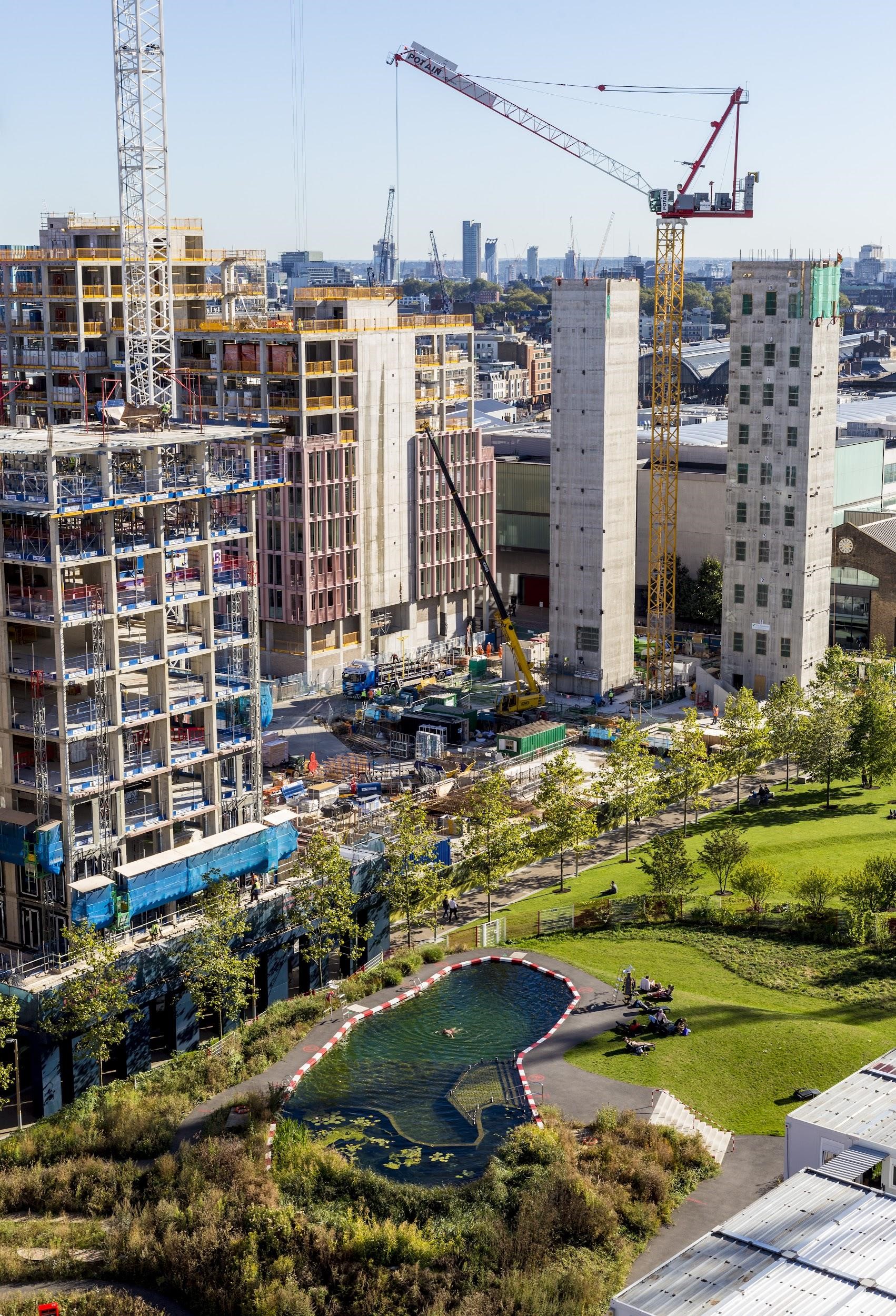WHO
CURATORS: Stéphanie Delcroix and Michael Pinsky, Relay art program
CLIENT: King’s Cross Central Limited Partnership
Project Manager: Argent LLP
WATER ENGINEERING: Biotop and Planungsbüro WasserWerkstatt
SPECIFIC PIONEER LANDSCAPE: Rita Breker-Kremer and Stefanie Strauß
PARTICIPATORY WORKSHOPS & LANDSCAPE MAINTENANCE: Global Generation
MONITORING Central Saint Martins – Students of Spatial Practices Dept.
TECHNICAL DRAWINGS: BD landscape
NATURAL POOL SYSTEM: Biotop
POOL CONTRACTOR: Kingcombe Aquacare
HARD PART SOFT LANDSCAPE: Willerby Landscapes
OPERATION: Fusion
PETITION: Imogen Barbara Rich
WHAT
‘Of Soil and Water: The King’s Cross Pond Club’ was a public art project by OOZE (Eva Pfannes and Sylvain Hartenberg) and Marjetica Potrč, commissioned by King’s Cross Central Limited Partnership, and it formed the last installation in the Relay Arts programme curated by Michael Pinsky and Stephanie Delcroix.
It was open from May 2015-October 2016 and was positioned within the Lewis Cubitt Park towards the North of the site. Occupying a temporary site in the midst of the King’s Cross construction site in London, it created a micro-ecological environment with a natural swimming pond at its centre.
The swimming pond quickly became a public success for both locals and visitors. Though it was initially intended as a temporary art project, residents formed a campaign to install it as a permanent feature in the King’s Cross redevelopment plan, citing the health benefits of natural outdoor swimming and urban green space as well as the social benefits of a shared space. The pond, as well as the efforts to save it, helped form a diverse community where one did not previously exist.
For the residents the pond became a focus point of the development; something on a human scale they could fight for and which could become ‘theirs’ at times (like the open community day). Within two months after opening the pond defined their engagement with the developer: They were determined to keep the pond open for a longer time. In fact they were proud that this “wonderful and rare slice of the natural world” attracted people from all backgrounds to their front door and could be a tool of engagement between residents themselves.
As part of the campaign to save the pond, 5,289 individuals signed an online peti- tion addressed to the developers, out of which 1,627 left a comment. Comments such as ‘This is a lovely place to swim. ... I don’t see why it has to be closed at all! The plan of regeneration for King’s Cross shouldn’t be about a temporary nice place but permanent loveliness!’ and many others (available in the text detailed below).
Despite the strong campaign to keep the swimming pond open it closed as planned in 2016. The campaign speaks to the power of meanwhile to assemble publics and create value. It also challenges the notion of 'temporary provision' and demonstrates the opportunity to use such temporary interventions to explore potential for more permanent provision.
HOW
The pond – the first public natural swimming pond in the UK – was free of chemicals, and purified water by natural processes using plants, nutrient mineral- ization and a set of filters to supplement natural filtration in a closed-loop cycle. The pond was open to exactly 163 visitors each day, a limit set by the capacity of the plants to filter the water. The enclosed site presented the natural environment in miniature, a mise en scène of the processes that occur between humans, water, soil and plants. From the elevated pond, swimmers could watch the evolution of the surrounding neighbourhood and the ever-changing city – looking onto something, but also being looked at while swimming and being vulnerable. Water is the element one is exposed to directly, by smell and taste – the balance of nature within the city becomes instantly palpable.



REFERENCES
Much of the text is an excerpt from: Spatial Practices: Modes of Action and Engagement with the City, edited by Melanie Dodd p.113-120